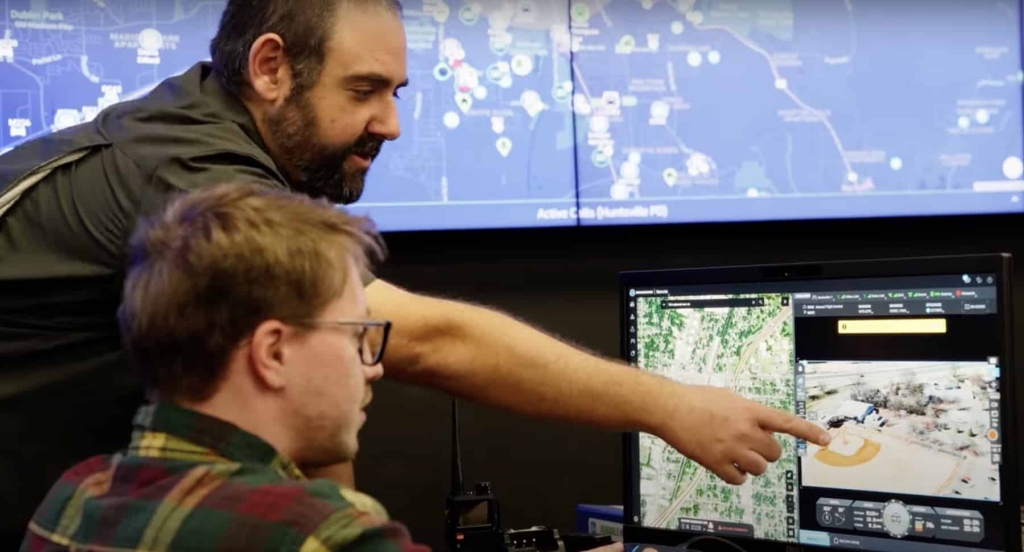Ohio Launches Nation’s First Statewide Drone First Responder Program

Amazon Prime Deals: DJI Mini 4K for $239, DJI Neo for $159, Skyrover X1 FMC for $718!
Ohio has become the first state in the nation to deploy a statewide Drone First Responder program, with SkyfireAI selected to manage the groundbreaking initiative. Created under Ohio House Bill 96, the two-year pilot program aims to give law enforcement, fire, and EMS agencies across the state rapid aerial response capabilities—including in rural communities that could never justify standalone programs.
The announcement marks a significant shift in how states approach public safety drone deployment. While cities like New York, Minnetonka, and Chula Vista have pioneered municipal DFR programs, Ohio is the first to create a coordinated statewide system with unified training, technology standards, and shared infrastructure.
Ohio’s Blueprint for Statewide Emergency Response
SkyfireAI will oversee every phase of the pilot program, from coordinating with municipalities to install rooftop drone systems, to ensuring FAA compliance and training operators. The company brings proven experience managing municipal DFR programs and spearheading medical drone delivery initiatives with CVS Health during disaster response operations.
“Ohio’s statewide DFR program isn’t just a first—it’s the blueprint,” said Don Mathis, Co-Founder and CEO of SkyfireAI. “By unifying policy, training, and technology under one roof, Ohio is making DFR accessible to every community, especially rural departments that could never justify a standalone program. This is how we scale safe autonomy, save minutes, and save lives.”
State Representative Bernie “Bunyan” Willis, Chair of the Ohio House Transportation Committee, emphasized Ohio’s aviation legacy.
“Ohio is proving once again that we are the HOME of aviation and at the forefront of aviation innovation,” Willis said. “By launching the first statewide Drone First Responder program, we are showing how unmanned aerial systems can enhance public safety, accelerate emergency response, and strengthen our communities.”
First Statewide UTM System Enables Safe Operations
CAL Analytics, a Dayton-based company already operating Ohio’s statewide drone traffic management system, will serve as technical integrator. The company will build what officials describe as the nation’s first statewide Uncrewed Traffic Management (UTM) system specifically designed for DFR operations.
This UTM infrastructure will strategically deconflict drone activity across multiple operators and provide enhanced situational awareness through airspace monitoring sensors. The system enables safe coordination essential for Beyond Visual Line of Sight (BVLOS) operations, which the program plans to deploy under FAA approval.
Richard Fox, Director of the DriveOhio UAS Center, noted the state’s decade-long leadership in drone integration. “By launching the nation’s first statewide Drone First Responder initiative, we are not only giving first responders tools to save lives and protect communities, but also setting a model for how states can safely integrate drone technology at scale,” Fox said.
Advanced AI and Multi-Ship Operations on the Horizon
SkyfireAI’s AI-powered platform could enable capabilities beyond typical DFR programs. The company is developing technology to support multi-ship operations where a single operator—or potentially no pilot at all—could oversee multiple aircraft simultaneously. This automation could provide true 24/7 coverage in areas where single-agency economics don’t work.
Over the next two years, participating municipalities will receive advanced drone systems, comprehensive first responder training, and access to standardized statewide procedures. Data collection and community outreach will help demonstrate how drones can become trusted public safety tools across diverse Ohio communities.
DroneXL’s Take
Ohio just changed the game for drone first responder programs. While we’ve covered the explosive growth of municipal DFR systems throughout 2025—from Georgia Tech’s 90-second campus response to NYPD’s five-borough deployment—this statewide approach solves a problem those programs couldn’t: rural access.
The economics of DFR have always favored dense urban areas where high call volumes justify expensive infrastructure. Ohio’s shared-service model flips that equation. By standardizing training, pooling resources, and creating statewide UTM coordination through CAL Analytics, smaller departments can participate without shouldering the full burden of FAA waivers, vendor negotiations, and specialized pilot training.
This is the blueprint other states will follow. The question isn’t whether more states will replicate this model—it’s which one moves second. With 214 FAA DFR waivers approved by mid-2025 and the market dominated by vendors like Flock Safety, Skydio, and BRINC, Ohio is betting that state-level coordination beats municipal fragmentation.
The AI angle is intriguing too. SkyfireAI’s vision of multi-ship autonomous operations could eventually mean a single rural county gets the same aerial coverage as a major city—without needing a dedicated pilot for every drone. That’s not science fiction anymore; it’s the logical next step for scaling emergency response.
What do you think? Share your thoughts in the comments below.
